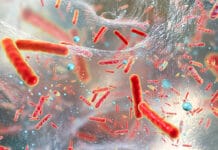According to the World Health Organization, several billion people globally are infected with the herpes simplex virus (HSV-1).1 Determining the origin and changes that occur in viruses can help scientists better understand the virus as well as therapeutic and preventive measures. However, tracing the origin and genomic changes can be challenging for viruses that have infected humans for hundreds of years.
In a recent study published in Science Advances, the authors aimed to answer some of these questions using teeth as the source for the viral genome of HSV-1.2
Archeological Teeth
We have learned a lot from the COVID pandemic, including how the genome of a virus can change to be a better “fit” for the host. The same is true for HSV-1. The difference is that scientists will need access to ancient human DNA to determine the genomic sequence, time period, and any changes that may have taken place over time that allowed the virus to be more of a “fit.”
The scientists determined the high prevalence of HSV-1 infections should be abundant in archeological teeth. HSV-1 is classified as a double-stranded DNA virus, which should allow it to preserve well, as DNA viruses are more stable than RNA viruses. Rather than utilizing the dental pulp, the scientists decided to use the apical root. The decision to utilize this portion of the tooth for this research stemmed from the fact that the apices of the tooth are proximal to the trigeminal ganglia, where HSV-1 is typically found.
Teeth Samples Collected
Sampling was acquired from individuals buried at multiple locations, and the teeth retrieved from the skeletal remains varied as well. Studies indicate an increase in HSV-1 in chronic and aggressive periodontal disease cases. Environmental/lifestyle evidence of stress and malnutrition also allows for a higher prevalence of HSV-1. This is due to the suppression of the immune response, allowing more viruses to circulate and be accessible in the remains.
It was determined that one of the samples was from an individual with insufficient nutrition. In contrast, two of the samples were retrieved from individuals with evidence of periodontal disease, and the last was a sample from an individual that was a tobacco smoker.
Archeological Summary Information for each Sample
| Sample ID | Site | Sample taken* | Morphological age estimate | Chronological dating | Morphological sex estimate |
| JDS005 | Hospital of St. John, London | LLM1 | 17-25 | 1350-1450 CE | Male |
| EDI111 | Barrington A, Edix Hill, near Cambridge, UK | LLM2 | 35-45 | 500-575 CE | Female |
| BRO001 | Nevolino, USSR | PM2 | Adult | 253-530 CE | N/A |
| RIJ001 | Alphen aan den Rijn in Netherlands | ULM1 | Adult | 1600-1700 CE | Male |
Adapted from Guellil et al., 2022.
*LLM1=lower left molar 1, LLM2= lower left molar 2, PM2=premolar 2, ULM1=upper left molar 1
HSV-1 Evolution
The authors report either a lineage replacement or a recent emergence of the extant HSV-1 strain currently found in humans. As mentioned, for lineage replacement to occur, there must be a change that allows the new lineage to become more transmissible and outcompete the old lineage. If you can imagine the evolution of SARS2, each variant is replaced by a more “fit” variant that outcompetes the previous variant leading to a higher prevalence of the more “fit” variant.
The same is true here; however, for this to occur, there must be changes in the pathogen or host-specific changes that allow the virus to be more transmissible. In the case of SARS2, the virus mutates to be more transmissible and evades immunity. In the case of HSV-1, according to this recent study, it appears there was a change in human behaviors since no large-scale changes were detected in the genome of HSV-1.2
The increase in population density during the Bronze Age has long been a turning point in infectious diseases, making them more easily transmitted through close-knit communities. This seems to be the time when the prevalence of HSV-1 also shifted. Originally, the transmission was primarily vertical from mother to child prior to the Bronze Age. However, lateral transmission is evident as population density increased during the Bronze Age. This is likely due to new cultural practices, specifically “the advent of sexual-romantic-kissing.”2
The results of this study indicate the distribution of HSV-1 is a product of changes in our cultures and behaviors. The current strain seen today likely originated in Europe rather than Asia or Africa, which was previously hypothesized. Previous studies have postulated the origin of HSV-1 was either African and/or Asian apes, which was a different virus that recombined to allow human infection.3 The authors do cite the need for further research to definitively determine the origin of HSV-1 as the “highly cosmopolitan nature of modern sampling is not ideal for reconstructing historic HSV-1 transmission events.”2
Teeth can be utilized for so many different areas of research, from stem cells to forensics and even in an attempt to determine the origin of an infectious disease that has plagued humans for centuries. The possibilities seem endless as more and more discoveries are made using teeth. I think it is fair to say that teeth aren’t for just chewing and smiling.
Before you leave, check out the Today’s RDH self-study CE courses. All courses are peer-reviewed and non-sponsored to focus solely on high-quality education. Click here now.
Listen to the Today’s RDH Dental Hygiene Podcast Below:
References
- Massive proportion of the world’s population are living with herpes infection. (2020, May 1). World Health Organization. https://www.who.int/news/item/01-05-2020-massive-proportion-world-population-living-with-herpes-infection
- Guellil, M., van Dorp, L., Inskip, S.A., et al. Ancient herpes simplex 1 genomes reveal recent viral structure in Eurasia. Science Advances. 2022; 8(30): eabo4435. https://www.science.org/doi/epdf/10.1126/sciadv.abo4435
- Wertheim, J.O., Smith, M.D., Smith, D.M., et al. Evolutionary origins of human herpes simplex viruses 1 and 2. Molecular Biology and Evolution. 2014; 31(9): 2356-2364. https://www.ncbi.nlm.nih.gov/pmc/articles/PMC4137711/











